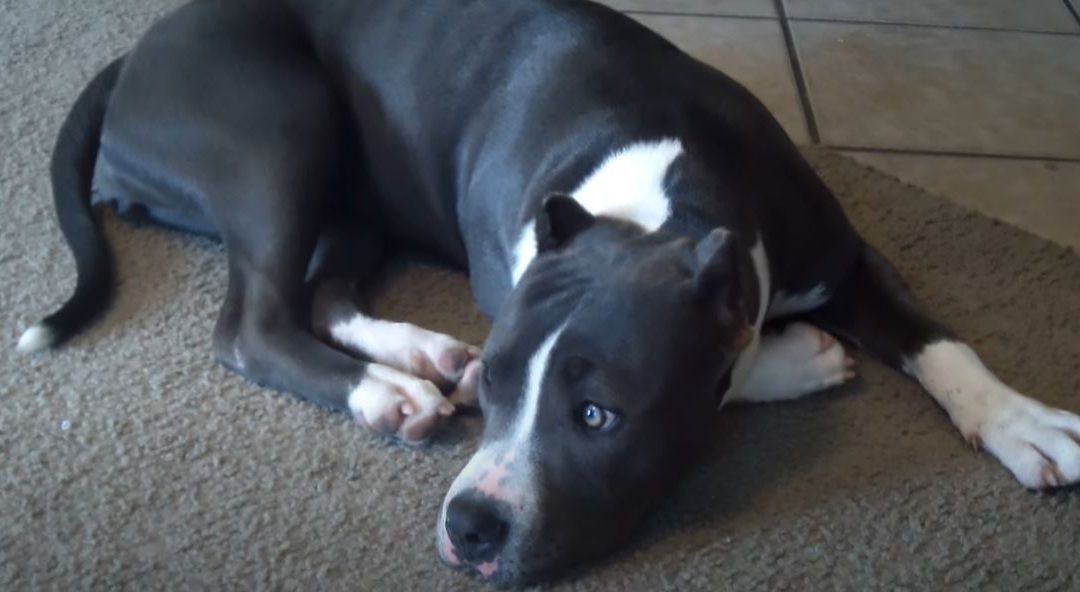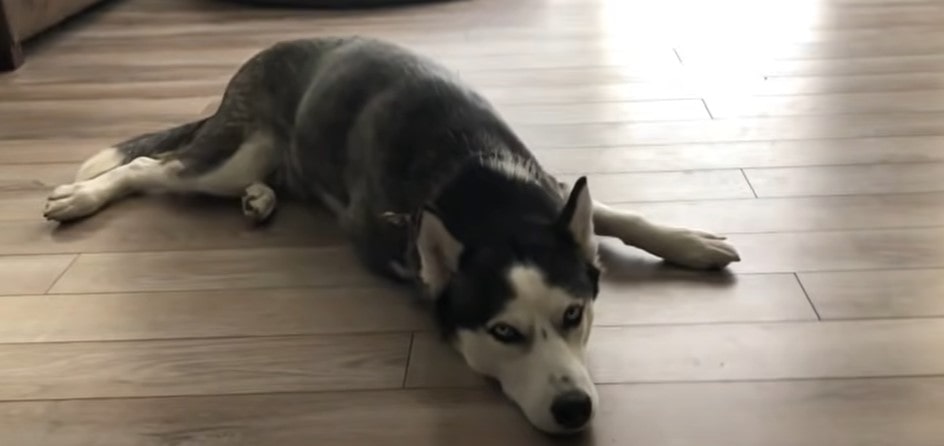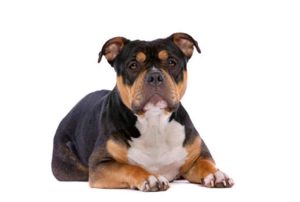
Razor edge Gotti pitbull
Introduction to the Razor Edge Gotti Pitbull breed
The Razor Edge Gotti Pitbull is a breed of American Pitbull Terrier that is recognized for its distinct appearance and muscular build. It is a relatively new breed that was created in the 1990s by a breeder by the name of Dave Wilson in the United States. The breed is a result of a careful breeding program that aimed to produce dogs with the best qualities of two bloodlines, the Razor Edge and Gotti bloodlines.
The Razor Edge Gotti Pitbull is distinguished by its wide head, strong jaws, and lean physique. They are medium to large-sized dogs, weighing between 60 and 90 pounds, and standing between 18 and 22 inches tall. Their short, glossy coat is available in a variety of hues, including fawn, blue, black, and chocolate.
These dogs are wonderful family pets because of their loyal and outgoing personalities. They are also well-liked by dog owners who take an interest in canine sports including agility, weight pulling, and obedience. They are sharp canines that are eager to serve their masters and pick up new skills.
It is important to note that the Razor Edge Gotti Pitbull breed has been the subject of controversy due to its association with dog fighting and aggressive behaviour. However, responsible breeding and training can help mitigate any negative traits and promote positive ones.
Overall, the Razor Edge Gotti Pitbull is a loyal and powerful breed that requires proper training, socialization, and care to thrive as a family pet.
History and Origin of the Breed
A breeder by the name of Dave Wilson created the Razor Edge Gotti Pitbull in the 1990s in the United States, making it a relatively young breed. The breed is a result of a careful breeding program that aimed to produce dogs with the best qualities of two bloodlines, the Razor Edge and Gotti bloodlines.
The Razor Edge bloodline was developed in the 1980s by a breeder named Dave Wilson. The bloodline was known for producing dogs with a broad head, muscular body, and a friendly temperaments. The Gotti bloodline, on the other hand, was developed by Richard Ba rajas and was known for producing dogs with a stocky build and a strong desire to please their owners.
Dave Wilson began crossbreeding the two bloodlines in the 1990s to create a new breed that combined the best qualities of both bloodlines. The result was the Razor Edge Gotti Pitbull, which quickly gained popularity among dog enthusiasts.
However, the breed has been the subject of controversy due to its association with dog fighting and aggressive behaviour. It is important to note that responsible breeding and training can help mitigate any negative traits and promote positive ones, and the breed can be a loyal and loving family pet with proper care and training.
Physical characteristics and appearance
The Razor Edge Gotti Pitbull is a muscular and athletic breed with a strong, broad head and a powerful jaw. They have a stocky, muscular body that is well-proportioned and balanced. They have a short, glossy coat that comes in a range of hues, including fawn, blue, black, and chocolate.
The breed is medium to large in size, with males weighing between 60-90 pounds and females weighing between 50-70 pounds At the shoulder, they normally measure 18 to 22 inches tall.
Although some breeders prefer to leave them unaltered, their tail is typically docked and their ears are frequently cropped. They shed very little and have a short, glossy coat that is simple to keep.
Overall, the Razor Edge Gotti Pitbull is a striking and powerful breed that exudes athleticism and strength. Their appearance is intimidating, but their friendly and loyal personality makes them great family pets.
Temperament and personality trait
The Razor Edge Gotti Pitbull is known for its loyal, friendly, and affectionate personality. They are extremely sociable dogs who enjoy being around people and taking part in family activities. They make great family pets because they are frequently praised for being kind and understanding with kids.
The intelligence of these dogs is also well-known, and they are quick learners who are eager to please their owners. They are quite trainable and react well to training techniques that use positive reinforcement. With proper socialization and training, the Razor Edge Gotti Pitbull can be a well-behaved and obedient companion.
The breed can be aggressive toward other animals, especially smaller pets, because of their intense prey drive. Training and early socialization can lessen this habit.
Overall, the Razor Edge Gotti Pitbull is a devoted, sociable, and intelligent breed that, with the right socialization and training, makes a wonderful family pet. It’s crucial to remember that responsible ownership and appropriate training are necessary to encourage this breed’s desirable disposition.
Training and exercise needs
Because they are an athletic breed, Razor Edge Gotti Pitbulls need regular mental and physical stimulation to stay healthy. They thrive on daily walks, runs, and playtime, and they enjoy activities such as agility, obedience training, and weight pulling. To keep them healthy and content, it is advised to give them at least 30 to 60 minutes of exercise each day.
Since this breed is highly intelligent and trainable, training is also crucial. Praise, treats, and play are all powerful positive reinforcement training techniques. It is important to start training early and be consistent with it to promote positive behaviour and prevent any undesirable behavior from developing.
Socialization is also essential for this breed, as they can be wary of strangers and exhibit aggression towards other animals. Early socialization can help them learn appropriate behavior around people and other animals and reduce the likelihood of aggressive behavior.
It is also important to provide them with mental stimulation, such as puzzle toys or training games, to prevent boredom and destructive behavior.
Overall, the Razor Edge Gotti Pitbull requires regular exercise, training, and socialization to thrive as a family pet. They can be devoted family members and terrific companions if given the right attention and care.
Health concerns and common issues
As with any dog breed, the Razor Edge Gotti Pitbull may be prone to certain health issues. However, employing ethical breeding procedures can aid in lowering the likelihood that these problems will arise. The following are a few health issues that have been linked to this breed:
Hip dyspepsia: This is a common condition that can affect many large dog breeds, including the Razor Edge Gotti Pitbull. The hip joint doesn’t grow properly due to a hereditary issue, which causes pain and makes movement challenging.
Allergies: This breed may be more susceptible to skin allergies, which can be brought on by a number of things, including diet, the environment, and parasites.
Heart disease: Some breed members may be more susceptible to the disorder known as dilated cardiomyopathy, which causes the heart to expand and weaken.
Eye issues: Cataracts, glaucoma, and retinal atrophy may be present in some Razor Edge Gotti Pitbulls.
To identify any health issues early on, it’s critical to get your dog examined by a veterinarian on a regular basis. To ensure that they are not passing on any inherited health issues to their children, ethical breeders should perform health exams on their pets.
The Razor Edge Gotti Pitbull can have a happy and healthy life if given the right attention and care. Regular veterinarian care, a balanced diet, and exercise can all contribute to their general well-being and lower the likelihood of health problems.
Grooming and care tips
When it comes to grooming, the Razor Edge Gotti Pitbull is a breed that requires little effort. To maintain their health and happiness, there are still a few crucial care guidelines that must be followed.
The breed’s short, glossy coat only needs occasional brushing. Brushing them once or twice a week with a soft-bristled brush can help remove any loose hair and keep their coat shiny and healthy.
These dogs don’t need to be bathed too often because doing so can rob their coats of their natural oils. It is recommended to bathe them only as needed, or when they become excessively dirty or smelly.
Regular nail trimming is necessary to keep your dog’s nails from growing too long and irritating him. It is advised to cut their nails as needed or every few weeks.
Dental care: Dental care is important for this breed, as they are prone to dental problems such as periodontal disease. Their oral health can be maintained with the help of consistent tooth brushing, dental chews, and expert dental cleanings.
Exercise and diet: Proper exercise and diet are essential to keep this breed healthy and happy. Regular exercise and a healthy diet can help kids avoid obesity and other health problems.
Regular vet visits: To make sure your dog is healthy and up to date on vaccines, make sure to arrange regular visits with your veterinarian.
In terms of grooming, the Razor Edge Gotti Pitbull is generally a low-maintenance breed. The keys to keeping them healthy and content are frequent exercises, a balanced diet, and veterinarian treatment.
Breeding and adoption considerations
If you are considering a breeding or adopting a Razor Edge Gotti Pitbull, there are several important considerations to keep in mind.
Breeding:
Responsible breeding: It is important to only breed dogs that are healthy, have good temperaments, and meet breed standards. This helps to reduce the likelihood of hereditary health problems and ensures that the puppies are well-suited for their new homes.
Ethical breeding: You should only breed dogs if you have the time, resources, and commitment to properly care for the mother and her puppies. It’s crucial to put the welfare of the dogs before business interests.
Adoption:
Shelters and rescues: Consider adopting a Razor Edge Gotti Pitbull from a reputable shelter or rescue organization. Many of these dogs are surrendered due to no fault of their own and are in need of loving homes.
Breed-specific rescues: There are several breed-specific rescue organizations that specialize in the Razor Edge Gotti Pitbull. These organizations can provide valuable information about the breed and may have dogs available for adoption.
Breed traits: It is important to understand the breed’s traits and temperament before adopting a Razor Edge Gotti Pitbull. They require regular exercise, training, and socialization to thrive as family pets.
Overall, ethical adoption and responsible breeding can contribute to the health and welfare of Razor Edge Gotti Pitbulls. It is important to do your research and consider all factors before making a decision to breed or adopt a dog of this breed.
Legal restrictions and controversies surrounding the breed
The Razor Edge Gotti Pitbull breed, like many other pit bull-type breeds, has been subject to controversy and legal restrictions in some areas. Here are some of the legal restrictions and controversies surrounding the breed:
Breed-specific legislation (BEL): Some cities and countries have implemented BEL, which bans or restricts ownership of certain breeds, including the Razor Edge Gotti Pitbull. These laws are often controversial and criticized for being ineffective in reducing dog bites and unfairly targeting certain breeds.
Negative stereotypes: Pit bulls, including the Razor Edge Gotti Pitbull, have been associated with negative stereotypes and myths, such as the idea that they are inherently aggressive or dangerous. This has led to discrimination against the breed and challenges in finding homes for them.
Dog fighting: Unfortunately, some individuals have used pit bulls for illegal dog fighting activities, leading to negative associations with the breed.
Overbreeding: The popularity of the Razor Edge Gotti Pitbull and other pit bull-type breeds has led to overbreeding and an influx of poorly bred dogs with health and temperament issues.
It is important to note that not all areas have BEL and many responsible owners and advocates are working to challenge and overturn these laws. Additionally, the negative stereotypes and controversies surrounding the breed do not reflect the true nature of individual dogs, as they can be loving, loyal pets when raised and trained properly.
As with any breed, responsible ownership and breeding practices are key to promoting the health and well-being of Razor Edge Gotti Pitbulls and reducing negative associations and legal restrictions.
Conclusion and final thoughts on the Razor Edge Gotti Pitbull
In conclusion, the Razor Edge Gotti Pitbull is a breed that is loved by many for its loyal and affectionate nature, as well as its striking appearance. However, like many other pit bull-type breeds, it has faced controversy and legal restrictions in some areas.
Before thinking about adoption or breeding, it’s critical to comprehend the traits and requirements of the breed. This includes regular exercise, training, socialization, and proper veterinary care. Responsible ownership and breeding practices can help promote the health and well-being of the breed and reduce negative associations and legal restrictions.
Overall, the Razor Edge Gotti Pitbull can make a wonderful companion for the right owner who is willing to provide the time, resources, and commitment necessary to properly care for them. With proper care and training, they can be loving and loyal family pets who bring joy and companionship to their owners.







[…] Which foreign pets are legal in Washington State? […]